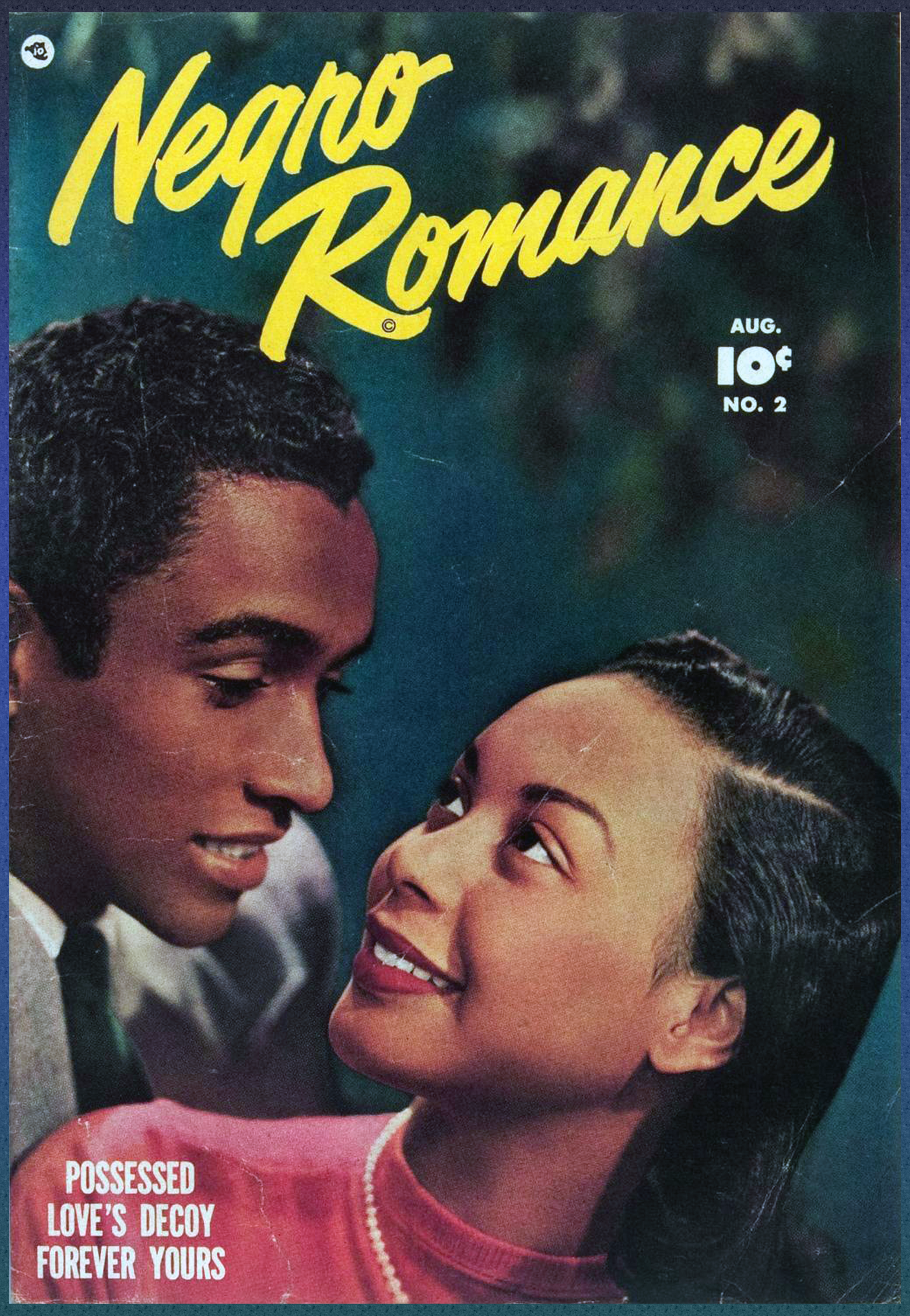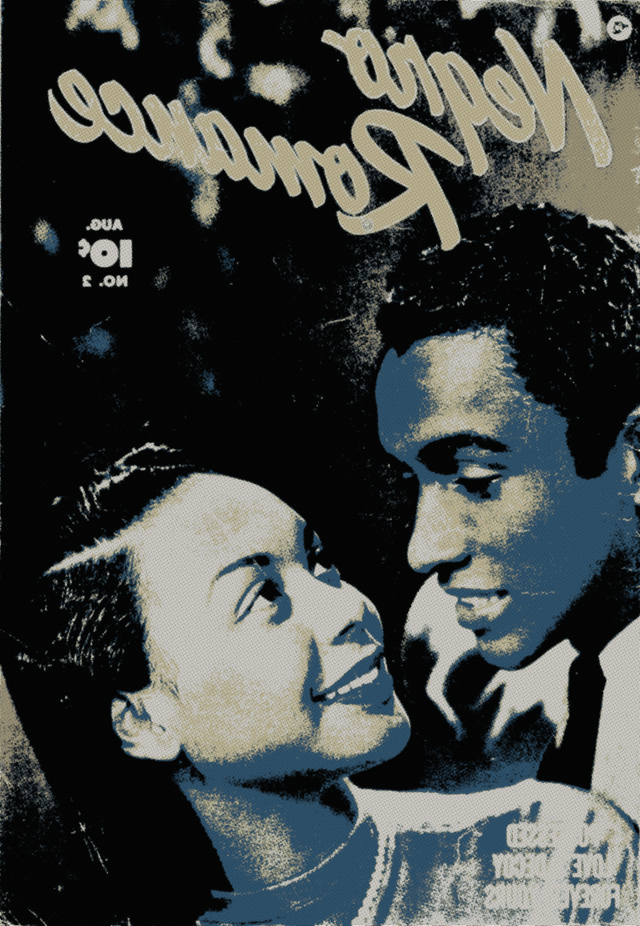Diversity in Golden Age Comics
Scanned Image: Comic Book Plus
Negro Romance #2
In February 2017, I discovered a beautiful photographic comic book cover and decided to make that the next design for my The Ninth Art Zazzle store. February being Black History Month, I had intended to use a super hero or sci-fi comic as my source, but couldn't find any public domain comics in those genres with black leads. But the minute I laid eyes on Negro Romance #2, I knew I'd found my new subject.
Negro Romance was a romance comic book published in the 1950s by Fawcett Comics. It is remarkable in eschewing African-American stereotypes, telling stories interchangeable with those told about white characters.** Published August 1950, Volume 1, No. 2 by Fawcett Publications in Greenwich, Connecticut; the title page has the names of the executive editor and various other editors, but no mention of the writer or the artist.***
In a 2011 episode of PBS's History Detectives, Professor Gwendolyn Wright discovered that the comic was most likely written by the editor, Roy Ald. He was in charge of the “Romance” line in general at Fawcett's. Ald was looking to experiment with this booming romance market because it was so lucrative. So he came out with the three issues of Negro Romance. Ald hired a young black artist, Alvin Hollingsworth, to draw the comic.
Alvin Hollingsworth, a young black man, was still in high school when he started working at Fawcett. He started out by doing touch ups and paste ups and general errands around the office. Roy Ald really liked Alvin Hollingsworth, so when he created the Negro Romance line, Ald picked Hollingsworth to do the artwork.

According to Professor Wright, the only distinguishing attributes of Negro Romance were its depiction of black people and the fact that the artist was also black. The stories inside were essentially the same as Fawcett's mainstream title Romantic Story. The characters are drawn, for all intents and purposes, as white folks with very dark tans. In a well-meaning attempt to avoid the ugly stereotypes of African-Americans that permeated most of 1950s popular culture, Ald created a comic that showed middle-class, educated blacks who had assimilated into the dominate culture. There is nothing authentically black in their features, their hair, their speech, or their stories.

My Design Process
Because the cover I found was in reasonably good shape, with only a few faint scratches, I decided to only do some color correction.It's always a consideration when starting a new project with an old comic—how much retouching and restoration should I do? If the image I'm working with shows a lot of wear, I usually try to enhance the image just enough to show the essence of the art without trying to make it look like a brand new publication.
Next, I created two png files of the main image, one in the standard 8" x 11" and the other about two and half times larger. Then I created a monotone background image, adding a blue-to-beige gradient map to a copy of the main image and and increasing the contrast. I copied the monotone image, flipped it, then created four png files, two the in the standard size, and two enlarged.
My First Sale


Negro Romance only lasted for three issues. Who's to say what it would have become if it had been given a longer run? Comics historian Shaun Clancy estimates that there are less than 10 known copies of each issue.

Out of This World: Fawcett's Negro Romance 2: "Possessed" (new scan)


What an interesting and little known bit of history.
Downvoting a post can decrease pending rewards and make it less visible. Common reasons:
Submit